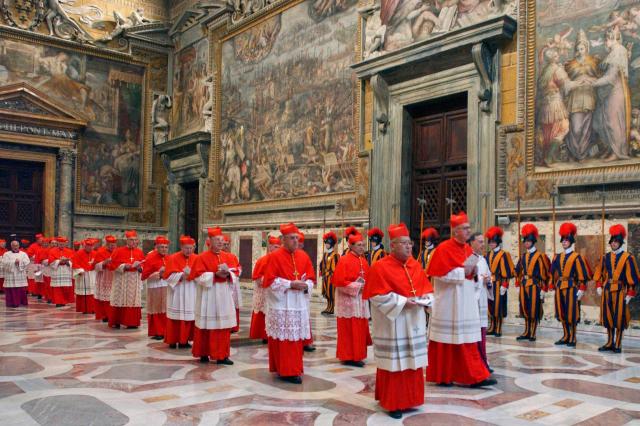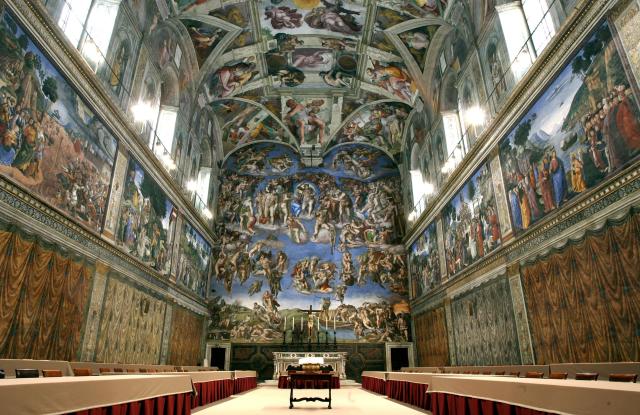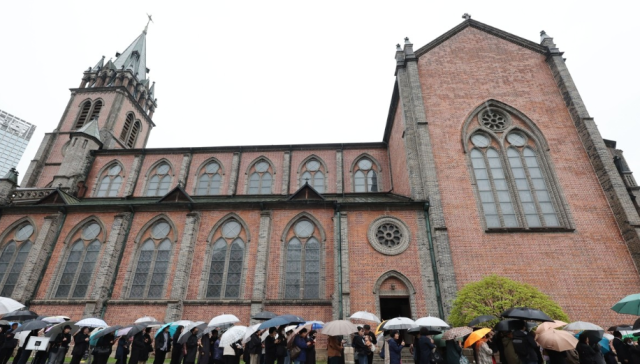
Following Saturday's funeral, the Catholic Church now faces the solemn task of selecting a new leader through its unique electoral system: the conclave.
The word "conclave" stems from Latin, combining "com" (together) and "clavis" (key) - an apt description for a process where cardinal electors are secluded until they choose the next head of the Catholic Church.
Popularized in media through works like Dan Brown's "The Da Vinci Code" and Robert Harris' "Conclave," this ancient procedure enforces complete isolation, secret ballots, and a prohibition on debates to ensure independence, neutrality, and fairness in the selection process.
The conclave takes place during the interregnum, a period of approximately 15 to 20 days beginning with the pontiff's death and concluding with the election of his successor.
Only cardinals under 80 years of age may participate as both voters and potential candidates. Currently, 135 of the world's 252 cardinals are eligible to enter the conclave as electors.
Cardinal Kevin Farrell, who announced Pope Francis' death, will serve as camerlengo (chamberlain), overseeing the Vatican during this interim period. As camerlengo, he will form a four-person committee with three randomly selected cardinals who rotate every three days.

Each cardinal swears an oath of secrecy and must maintain silence throughout the proceedings. External communication ceases completely - no media access or electronic devices are permitted. Even the Sistine Chapel's curtains remain drawn.
During the conclave, the Sistine Chapel transforms into a voting hall with a specially constructed chimney. Each cardinal casts one vote, with a two-thirds plus one majority required for election.
Ballot counting occurs daily - one round on the first day and up to four votes per day thereafter. After each day's voting, the ballots are burned with chemicals producing white smoke for a successful election or black smoke if no decision has been reached.
If the conclave fails to achieve a two-thirds majority after three days, the voting pauses for a day before resuming. While the longest conclave in history lasted three years in 1281, modern conclaves typically conclude within a week. Pope Francis was elected after just five ballots, with voting completed in merely 24 hours.
When cardinals agree on a candidate, the chosen man simply says "Accepto" ("I accept" in Latin). After selecting his pontifical name, the newly elected pope emerges to the sound of chiming bells, wearing the white zucchetto cap that symbolizes his office.
Experts suggest that while the Church may take a more conservative approach than under Pope Francis, the next pontiff could come from a different racial background.
According to Italy's largest daily newspaper Corriere della Sera, South Korea's Cardinal Lazarus You Heung-sik ranks 11th among its "12 likely successors to Pope Francis."
Other prominent candidates include Cardinal Pietro Parolin from Italy, Cardinal Luis Antonio Gokim Tagle from the Philippines, and Cardinal Fridolin Ambongo Besungu from the Democratic Republic of Congo.
Copyright ⓒ Aju Press All rights reserved.





View more comments